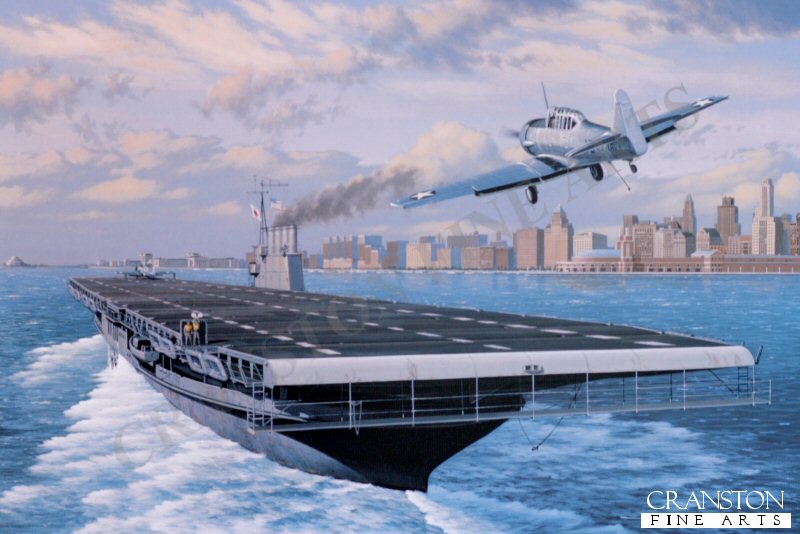- Sku:
- Vendor: Military Aviation Art Prints
Practice Makes Perfect by Stan Stokes.
The first successful carrier landing and take off took place on January 18, 1911 in San Francisco Bay. It was performed using a Curtiss biplane, which was flown by Eugene Ely, a demonstration pilot who worked for Curtiss Aircraft. A flying platform was built on the stern of the USS Pennsylvania, and a primitive arresting gear was provided by a series of ropes with sandbags attached to each end. Ely took off from Selfridge Field and made the first trap on the Pennsylvania. Following a pleasant lunch he took off from the deck and returned to Selfridge Field. This event was a watershed in the history of naval aviation. Ely would be followed over the next 9 decades by tens of thousands of naval aviators who would experience both the fear and ecstasy of a carrier landing at sea. By the time America was involved in WW II, carrier-based aviation had matured. Victory in WW II, especially in the Pacific, was influenced more by carrier-based aviation then any other factor. By the end of WW II America had a massive fleet of more than 100 aircraft carriers including the fast Essex Class big carriers and scores of light and escort carriers. During the War many of the pilots who earned their Navy wings did their carrier qualifications on the Great Lakes. Two paddle wheel steamboats were converted by the Navy to serve as training carriers. They were the USS Sable and the USS Wolverine. These ships had small decks which were fairly close to the water. A significant number of aircraft were lost during these practice sessions and as in any military training operation there were casualties. The aircraft shown being waved off in Stan Stokes painting appropriately entitled Practice Makes Perfect is an SNJ. This aircraft was one of the primary trainers of WW II, and was utilized by both the Army Air Corps (AT-6) and the Navy (SNJ), as well as many other countries. Designated the AT-6 by the USAAC this capable aircraft was also known as the Harvard and the Texan. The Australians knew the aircraft as the Whirraway. More than 15,000 of these trainers were produced, and this capable low-wing monoplane remained in service for many years following the War. North American, better known for their production of the P-51 Mustang, evolved the AT-6 from an earlier design known as the BT-9. First production models reached service in 1940. Many pilots received aerial gunnery training in the AT-6. A fair number of these aircraft are still in flying condition and can be seen at many air shows throughout the world. Due a general appearance similar to Japanese fighters and dive bombers of WW II, a few of these aircraft have been modified to look like the latter aircraft.
Supplied with signed and numbered certificate of authenticity.
Signed limited edition of 4750 prints.
Print size 16 inches x 11.5 inches (41cm x 30cm)
Have a question?

Practice Makes Perfect by Stan Stokes.


